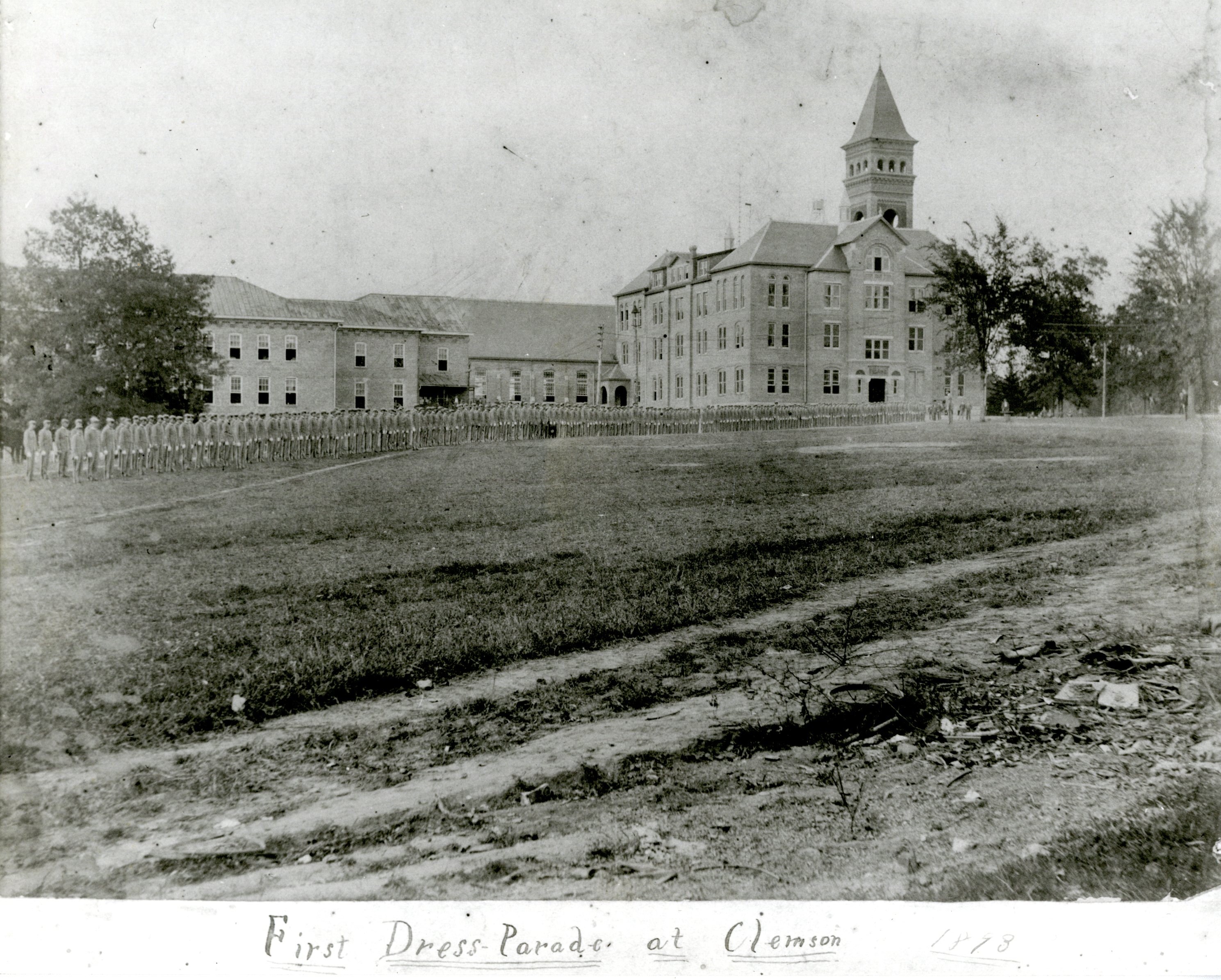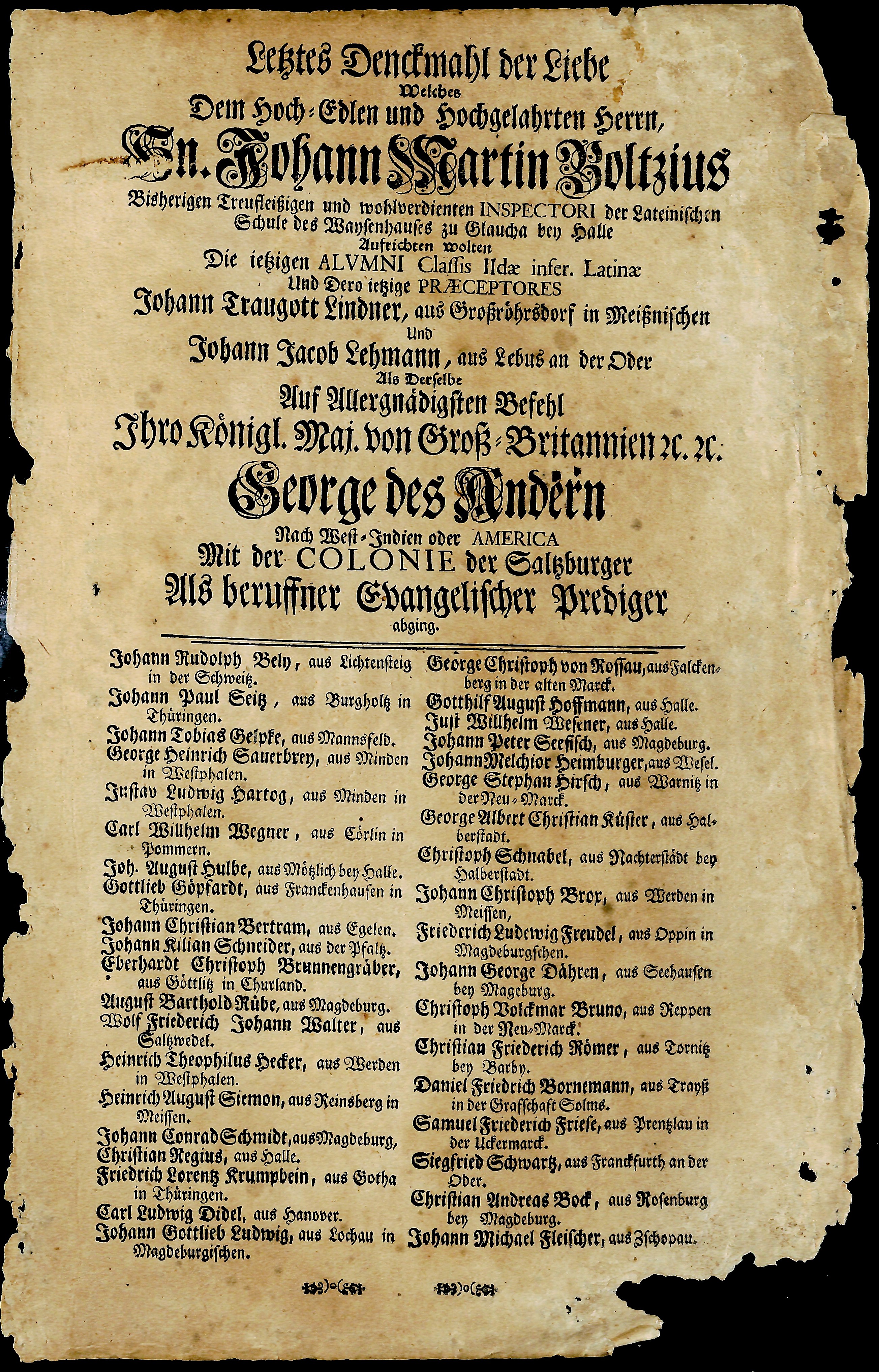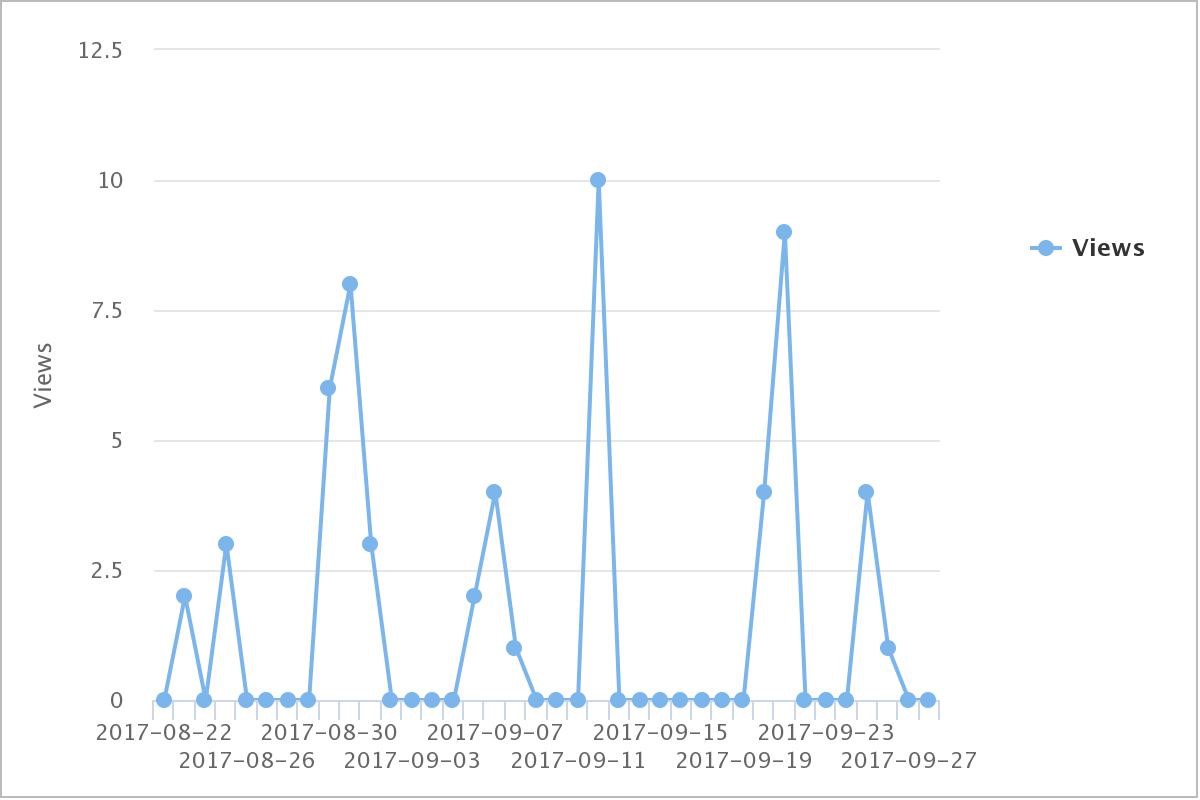"Clemson Bound 1893" Online Exhibit at Clemson's Special Collections & Archives

As thousands of new Clemson students visit campus this summer for Orientation, Clemson Libraries Special Collections and Archives has a new online exhibit -- “Clemson Bound 1893” ( https://spark.adobe.com/page/atdPcRAEZUd30/ ) -- that looks back 125 years to the first Clemson students. Clemson College opened its doors for the first time on July 6, 1893 for a shortened 5 ½ month session. Approximately 300 students were on campus that day, but over a hundred more continued to arrive before the Board of Trustees voted to close new enrollment over a month later.
“Clemson Bound 1893” looks at the students, the curriculum and the campus during that first year. It includes historic images and documents drawn from the holdings of Special Collections and Archives including the J.C. Littlejohn Collection, The Williston Wightman Klugh Papers, The Richard Wright Simpson Papers, and Board of Trustees Records. Images also include an original 1890s uniform in the collection.
Fall Conference Call for Proposals
Call for Proposals
SCAA 2018 Fall Conference and Annual Meeting
University of South Carolina – Aiken
Gregg-Graniteville Library
Friday, October 19, 2018
9:30 a.m. – 3:00 p.m.
Do you know how to salvage a molded, pestilence infected collection?
Are you familiar with a new software that could help museums and archives digitize and share collections?
Have you had a successful year in fundraising, and want to share your story with institutions that could benefit from your tactics and expertise?
Then join us for this year’s SCAA conference entitled, “How do I ...?”!
Our theme covers a wide array of topics, including digitization, processing, preservation, outreach ... all of the major subjects that archivists and cultural resource professionals deal with on a recurring basis!
We’re looking for presenters who can share innovative ideas, remind us of tried and true methods, and offer advice on how to be most effective at our work.
The conference will feature two presentation options and a poster session for participants to share their knowledge and innovation:
- 30 minute presentations
- 10 minute lightning rounds
- Poster sessions to showcase accomplishments and special projects of South Carolina archivists and allied professionals and students.
We hope that this year’s conference can offer you useful tips and tools, and we look forward to hearing how you meet archival demands.
To submit a proposal, please fill out the form located at https://goo.gl/RhKN8U
The deadline for submission is August 17, 2018.
Early bird registration August 31-October 10
$35 members
$50 non-members (includes membership for one year)
$15 students
Regular registration after October 10
$45 members
$60 non-members (includes membership for one year)
$25 students
“A Surprising Discovery” in the Salzburger Collection
By Scott Reeves, Archivist, Crumley Archives
The Salzburger collection, an accession of 160 books which once belonged to the German speaking immigrant community who came to of Ebenezer, Georgia in 1733, consistently rewards us with new surprises as we continue our cataloging and research work on it. One particularly interesting piece in the collection was a certificate that had been placed in protective plastic sheeting. We knew by the top-center placement in large bold fractur of the name of the community’s first pastor, Johann Martin Boltzius, along with the central placement of King George II of England, that this was a document of some significance.
Dr. Russell Kleckley, the translator of The Letters of Johann Martin Boltzius and keynote speaker for the Archives’ Reformation Reception, has been kind enough to advise us in our research efforts. He recently translated the document; it proved to be a farewell greeting from the faculty and students of the school connected to the Francke Foundation in the pietist center of Halle from whence Boltzius had accepted the call to lead the displaced emigrants from Salzburg. According to the conservationist who recently evaluated key volumes from the collection, the farewell document had initially been “tipped in” (specially bound in front of the title page) to the front of the book The Soul’s Treasures by Christian Scriver, which was evidently given as a departing gift to Boltzius.
More intriguing still, Dr. Kleckley wrote to an archivist colleague in Halle, Jürgen Gröschl, and included an image of the document. Mr. Gröschl expressed genuine interest in the collection, noting that he had already heard of our cataloguing efforts. Furthermore, he offered help in identifying rare titles. Of the Boltzius farewell document he stated:
The farewell greetings for Boltzius are really a surprising discovery, and we have not known of their existence so far, i.e. we do not possess another copy of this document. As it was printed, one could assume that the students of Boltzius’ class received a copy, but there is no copy in our archives. Many of these students are in our database as they became teachers or inspectors in the schools of the orphanage themselves and/or pastors in their own communities later.
I think the book by Scriver was a normally printed copy. Usually such books were sold unbound. In this case, the students added their print sheet with the greetings and had them bound together with the book by a professional bookbinder.
Mr. Gröschl has not been the only scholar to express interest in the collection; the work on the Salzburger collection has created some excitement in a broader scholarly circle, and we have been blessed with assistance not only from Dr. Kleckley but also of Dr. Scott Hendrix, professor emeritus of Reformation history and Princeton as well as Dr. Patrick Scott, former director of rare books at USC. In fact, Dr. Scott has invested a great deal of time and effort in assisting with the publication of a printed version of the collection’s bibliographic catalogue, The Salzburger Collection, which is now available for purchase with proceeds benefitting the work of the Archives. Sandy Leach of Lineberger Library and Shannon Smith our head archivist presented at a gathering of the SC Library Association (SCLA) about the process of transferring the collection from the library to the archives back in November, and an accompanying article is set for publication in the next edition of the SCLA journal. We have hopes that as our work continues the Boltzius farewell greeting will not be the last “surprising discovery.”

SAA’s Digital Archives Specialist Program: One Archivist’s Perspective
By Laura Litwer, Digital Initiatives Archivist, South Carolina Political Collections, University of South Carolina Libraries
President Jones-King recently asked me to write a blog post about my experience with Society of American Archivists’ Digital Archives Specialist (DAS) Curriculum and Certificate Program and thoughts on its benefits to archivists. I found the DAS program very useful, and I think that taking the courses can be very worthwhile for archivists who work with or need to understand born-digital materials, regardless of whether or not they earn the certificate.
I took DAS courses to improve my ability to work with born-digital materials received in collections in personal papers and to earn the DAS Certificate. When I took my first DAS course in March 2014, I was employed in a term position at Texas A&M University-Commerce to process a single hybrid collection, and had only theoretical knowledge of how to work with born-digital records. By the time I earned the certificate in August 2016, I was employed in a tenure-track faculty position at the University of South Carolina, had substantial responsibilities related to my repository’s digital program, and was using the knowledge I gained in the DAS courses and elsewhere to better do my job.
To fulfill the certificate requirements, I took seven DAS courses in 24 months, tested out of an additional two courses, and passed a comprehensive exam. Instruction for four of the classes was delivered in person; the other three were webinars. I was very fortunate that my current and former employers allowed me to select the classes I thought would be most useful and reimbursed me for most of the expenses I incurred in pursuit of the certificate. I am grateful for their generous support, without which I could not have taken full advantage of the DAS program.
Taking DAS courses increased my professional competence and confidence by helping me apply archival theory more effectively to the policy and procedure components of working with born-digital materials, increasing my awareness of good professional practices, and exposing me to useful tools and resources. The courses’ practical slant and consistently high-quality content and instruction contributed to their usefulness. In-person classes have the additional benefit of allowing attendees to network and learn how each other’s institutions are addressing common electronic records issues.
I found the in-person classes the most useful, both because of their content and the method in which they were delivered. However, waiting for relevant, in-person courses to be offered in my region extended the amount of time it took to complete the program. All of the in-person classes I took were between 3-1/2 and 5-1/2 hours away from my institution by car. Since all of the DAS in-person classes are a full day, this made at least one overnight stay with family or at a hotel necessary for each trip. To be sure, I could have completed the certificate requirements sooner and at less expense by taking more webinars and more conveniently located classes that didn’t meet my needs as well. However, I would probably not have learned most of the things that have most benefitted my work if I had done that, and my participation in the program would have been of less value to my employers and me.
Of the seven courses I completed, only one was not useful. It was a Foundational webinar that covered information I already knew. As a result, I chose to save time and money by testing out of two of the other Foundational courses required for the certificate. I don’t say this to knock these sorts of courses. To the contrary, I think taking Foundational courses that provide broad overviews of ways to think about and work with digital records are an ideal starting point for people who are interested in the DAS curriculum but concerned that the courses would be too advanced for them. I also do not mean to imply that all of the Foundational courses are of the same nature. A session of the Foundational class Arrangement and Description of Electronic Records: Part I taught by Seth Shaw was one of the most useful classes I have taken.
While the classes were beneficial because of their content and networking opportunities, the DAS Certificate itself is helpful as a way of conveying that I have relevant, up-to-date training to donors and colleagues. It also provides my employer with proof of my commitment to professional development.
Although the costs associated with pursuit of the DAS curriculum are not cheap, even with a SAA member discount, I have found them reasonable in light of the benefits offered by completing the courses and the certificate. I suspect that many of the 300+ people who have earned the DAS certificate since 2013 feel similarly.
Accessing the Archives: LibGuides and Special Collections
By Rebecca Denne, Special Projects Archivist, South Carolina Political Collections, University of South Carolina
“Outreach.” Regularly tossed around at departmental meetings and conferences, how can we put this buzzword into action? We know we have interesting collections, and we know where the fun stuff is stashed. Presenting our records in accessible and meaningful ways is at the foundation of our roles as archivists and at the heart of a strong outreach program.
As the new Special Projects Archivist for South Carolina Political Collections at USC, I divide my attention between curating exhibits, processing complex collections, and developing our outreach. When I started at SCPC three months ago I was blown away by the size, variety, and richness of our collections. Imagine you’re a USC student beginning your research and faced with 130+ collections. Where would you start?
USC’s library, like many academic libraries, subscribes to SpringShare’s content management system LibGuides. LibGuides are essential tools for supporting instruction, research, and technology integration at our university’s library. Librarians use them to organize subject-specific resources which, for many students, could be the primary gateway to discovering all relevant resources the library subscribes to and collects on a topic.
At SCPC, we’re creating LibGuides for popular subjects and to supplement some of our exhibits in an effort to better reach our users. The LibGuides offer new ways for users to engage with our records, and we think they can be a great research springboard. We currently have ten guides, and we’re working on another focused on how to use SCPC and archives in general.
Suppose a student wants to do their capstone project on some aspect of immigration. Our "Immigration in South Carolina" guide could set them on a number of investigative paths. Had they considered refugees and orphans of the Vietnam War? What about Jewish migration during World War II? Often, the unique ways in which our collections intersect and relate to one another isn’t immediately apparent from the finding aids. By curating these LibGuides, we hope to spark new and exciting research ideas for our users.

Overall, we’ve found that there are a number of benefits to using the platform:
- Flex it. LibGuides’ flexible format allows us to bring both library and archival resources together under a single subject. This helps users to more easily understand special collections as part of the library system at large and promotes the discovery of archival material. If a professor provides us some basic information about their course topic, we can even develop a LibGuide just for their class.
- All about those stats. On the backend, LibGuides provides valuable usage reports. We can see how many people have viewed the guide as well as how often the links within the guides (assets) have been accessed. Our ten guides have only been up for two months, and we’ve already had over 250 hits! We could use these statistics to make more informed decisions when prioritizing digitization projects or planning exhibits based on our users’ interests.

Stats from our Desegregation in South Carolina Schools LibGuide show the guide was viewed 57 times between August 22 and September 27, 2017.
- Getting social. We can include links to our Facebook, Twitter, and blog, giving students even more opportunities to connect and stay up to date.
- Show us the formats. We can provide text, include polls, link to finding aids, direct to the library’s catalog, and embed photographs from an easy-to-use platform.
Please feel free to check out our LibGuides!
If any of our topics spark your interest, feel free to get in touch. We’d be happy to assist you in your research.
Page 23 of 34
